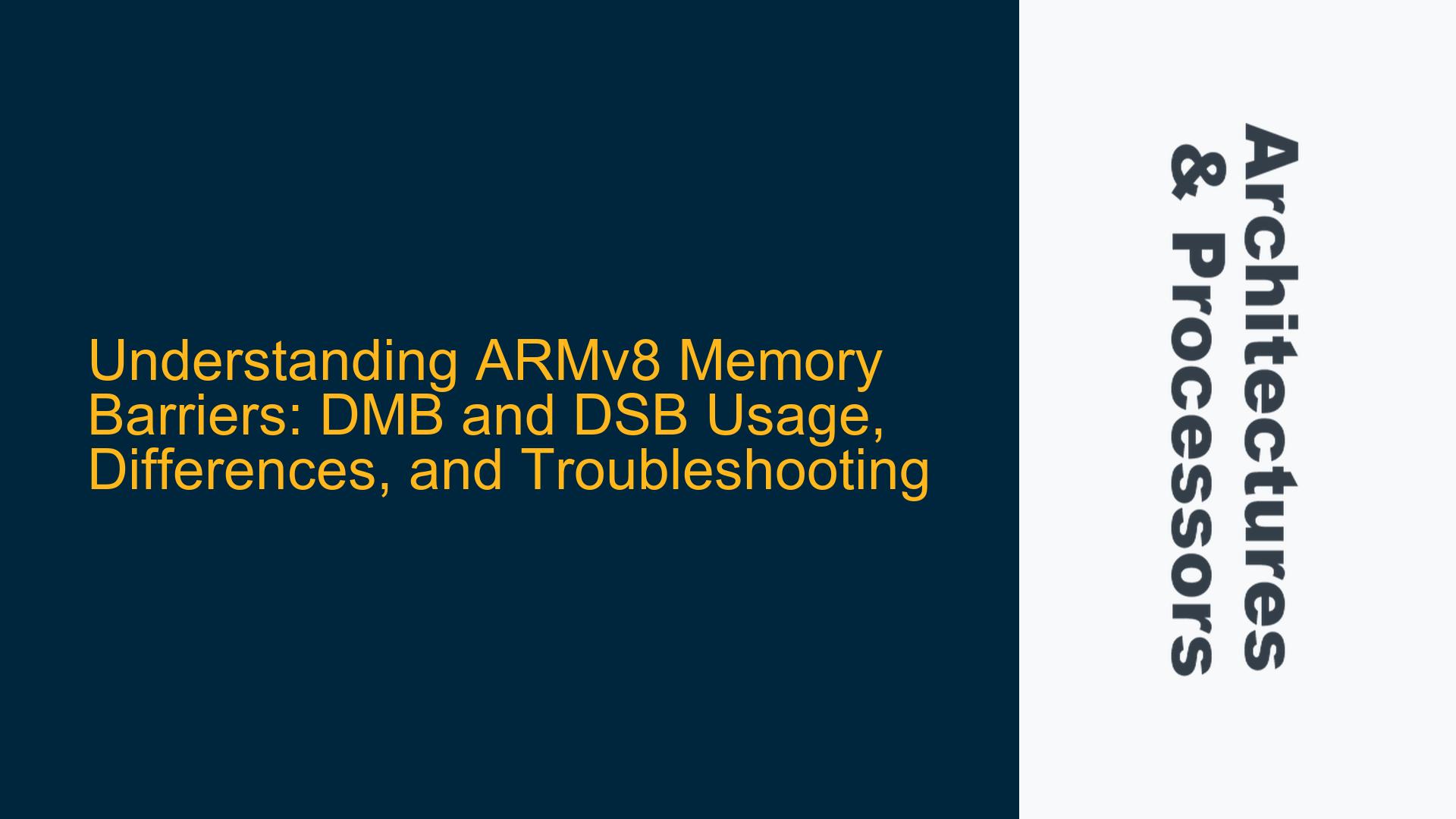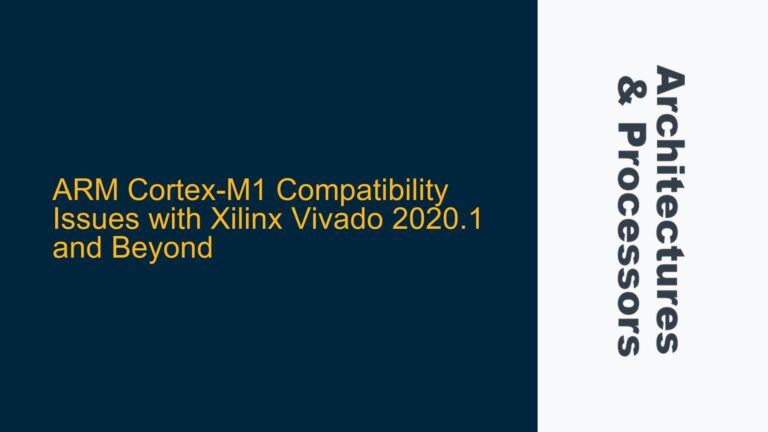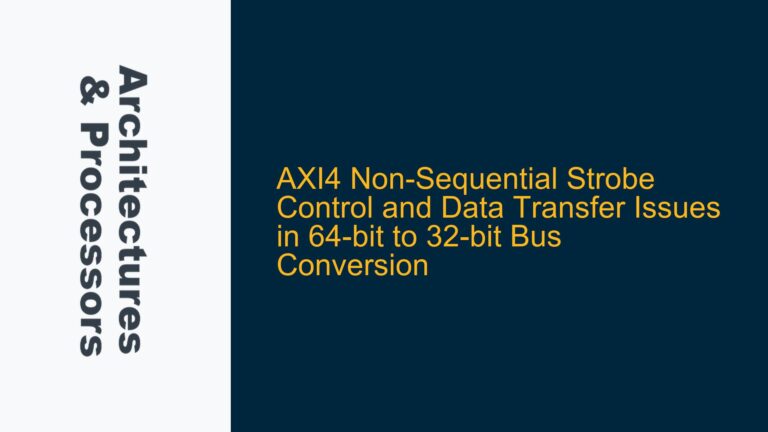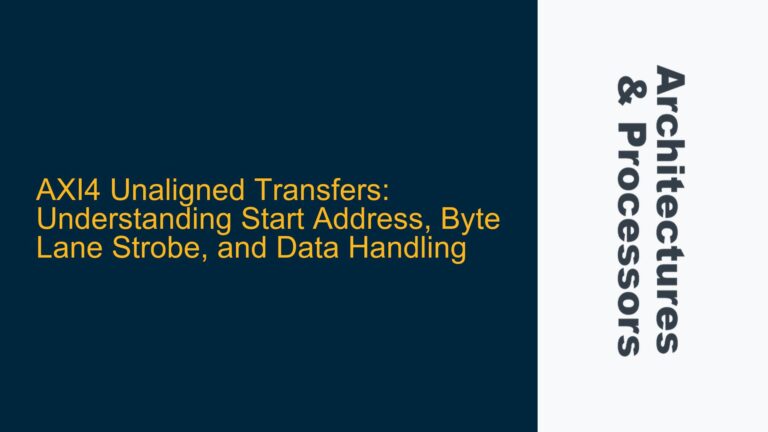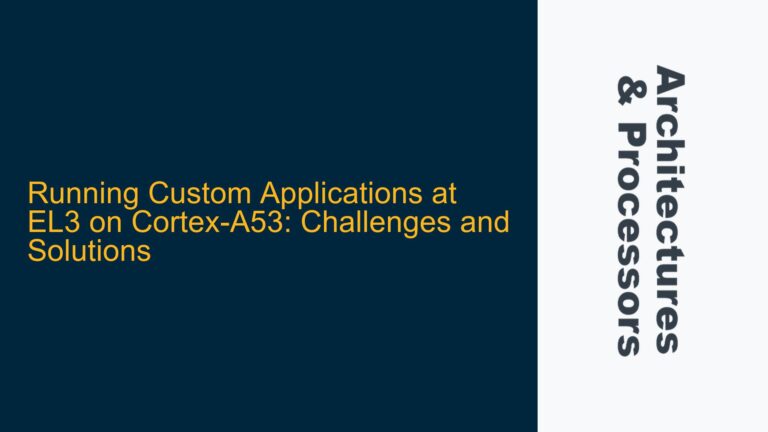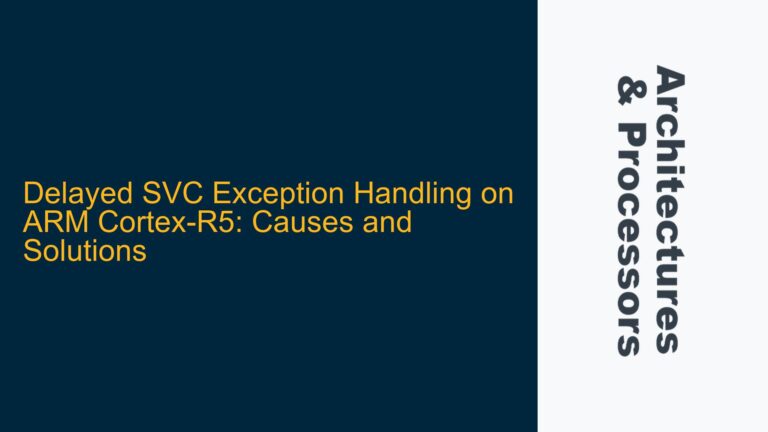ARMv8 Memory Barrier Semantics and Common Misconceptions
In ARMv8 architectures, memory barriers such as Data Memory Barrier (DMB) and Data Synchronization Barrier (DSB) are critical for ensuring correct memory ordering and synchronization between multiple Processing Elements (PEs). However, their semantics and usage are often misunderstood, leading to subtle bugs and performance issues. This section clarifies the core concepts and addresses common misconceptions.
DMB: Ensuring Memory Access Ordering
The Data Memory Barrier (DMB) instruction ensures that memory accesses before the barrier are observed in the correct order relative to memory accesses after the barrier. However, it does not guarantee the completion of those memory accesses. For example, consider a sequence of stores to registers A, B, and C. Without a DMB, the memory system might reorder these stores due to caching or bus arbitration. Placing a DMB after each store ensures that C is not written before B, and B is not written before A. However, the DMB does not ensure when these writes will complete or become visible to other PEs.
A common misconception is that DMB ensures the completion of memory accesses. This is not true. Completion refers to the point at which a memory access has fully propagated through the memory hierarchy and is visible to all PEs. DMB only ensures ordering, not completion. For instance, a store to a memory-mapped peripheral register might be ordered correctly relative to other stores but might not yet have taken effect when the next instruction executes.
DSB: Ensuring Completion and Instruction Synchronization
The Data Synchronization Barrier (DSB) instruction goes further than DMB. It not only enforces memory access ordering but also ensures that all memory accesses before the barrier have completed before any instruction after the barrier is executed. This includes non-memory instructions, making DSB a stronger synchronization primitive than DMB.
A key point of confusion is the "ST" option in DSB ST. The "ST" option specifies that the DSB only blocks subsequent stores, not loads or other instructions. This is useful in scenarios where only store operations need to be synchronized. For example, when writing to a peripheral register and then enabling interrupts, a DSB ST ensures that the store to the peripheral register completes before the interrupt enable operation.
Visibility vs. Completion
Understanding the difference between visibility and completion is crucial for correctly using memory barriers. Visibility refers to whether a memory access is observable by other PEs, while completion refers to whether the access has fully propagated through the memory system. A memory access can be visible to some PEs but not yet completed. For example, in a multi-core system with shared caches, a store might be visible to other cores in the same cache domain but not yet written to main memory.
Consider a system with multiple PEs, each with its own cache. A store by PE0 might be visible to PE1 if both share the same cache domain, but it might not yet be visible to PE2 in a different cache domain. The store is visible to PE1 but not yet completed with respect to PE2. This distinction is critical when designing systems with multiple cache domains or heterogeneous memory architectures.
Scenarios Requiring DSB Instead of DMB
While DMB is sufficient for ensuring memory access ordering, there are specific scenarios where DSB is necessary. This section explores these scenarios and provides practical examples.
Peripheral Register Access and Sleep Modes
One common scenario where DSB is required is when writing to peripheral registers and then entering a low-power sleep mode. For example, consider the following sequence:
- Write to a peripheral register to configure a device.
- Execute a Wait For Interrupt (WFI) instruction to enter sleep mode.
If a DMB is used instead of a DSB, the write to the peripheral register might still be in the processor’s write buffer when the WFI instruction is executed. This can lead to the device being configured incorrectly or not at all. A DSB ensures that the write completes before the processor enters sleep mode.
Interrupt Handling and Synchronization
Another scenario where DSB is necessary is in interrupt handling. For example, consider a system where a peripheral generates an interrupt, and the interrupt handler reads a status register to determine the cause of the interrupt. If the status register is read before the interrupt condition is fully propagated, the handler might miss the interrupt. A DSB ensures that the interrupt condition is fully propagated before the status register is read.
Example: DSB in Interrupt Handling
; Assume R0 contains the address of the peripheral status register
LDR R1, [R0] ; Read the status register
DSB ; Ensure the read completes
CMP R1, #0 ; Check the status
BNE handle_interrupt
In this example, the DSB ensures that the read of the status register completes before the comparison and branch instructions are executed. This prevents the handler from missing an interrupt due to incomplete memory access.
Troubleshooting Memory Barrier Issues in ARMv8 Systems
Memory barrier issues can manifest as subtle bugs, such as race conditions, missed interrupts, or incorrect peripheral behavior. This section provides a systematic approach to diagnosing and resolving these issues.
Identifying Symptoms of Memory Barrier Issues
The first step in troubleshooting memory barrier issues is to identify the symptoms. Common symptoms include:
- Race Conditions: Memory accesses appear to occur in the wrong order, leading to inconsistent program behavior.
- Missed Interrupts: Interrupts are not handled correctly, often due to incomplete memory accesses.
- Peripheral Misconfiguration: Peripheral devices do not behave as expected, often due to incomplete writes to configuration registers.
Diagnosing Memory Barrier Issues
Once the symptoms are identified, the next step is to diagnose the root cause. This involves:
- Reviewing the Code: Look for sequences of memory accesses that might require synchronization. Pay special attention to peripheral register accesses, interrupt handling, and sleep mode transitions.
- Adding Debugging Statements: Insert logging or debugging statements to track the order and completion of memory accesses.
- Using Hardware Debugging Tools: Use hardware debugging tools, such as JTAG probes, to monitor memory accesses and identify out-of-order execution.
Resolving Memory Barrier Issues
After diagnosing the issue, the next step is to resolve it by adding the appropriate memory barriers. This involves:
- Determining the Correct Barrier Type: Use DMB for ordering memory accesses and DSB for ensuring completion.
- Placing Barriers Correctly: Ensure that barriers are placed at the correct points in the code to prevent reordering or incomplete accesses.
- Testing the Fix: Verify that the issue is resolved by testing the system under the same conditions that triggered the original problem.
Example: Fixing a Race Condition
Consider a race condition where two PEs write to shared memory without proper synchronization. The following code demonstrates how to fix this issue using DMB:
; PE0 code
STR R0, [R1] ; Write to shared memory
DMB ; Ensure the write is ordered
STR R2, [R3] ; Write to another shared memory location
; PE1 code
LDR R4, [R1] ; Read from shared memory
DMB ; Ensure the read is ordered
LDR R5, [R3] ; Read from another shared memory location
In this example, the DMB ensures that the writes by PE0 are observed in the correct order by PE1, preventing the race condition.
Conclusion
Memory barriers are essential for ensuring correct memory ordering and synchronization in ARMv8 systems. Understanding the differences between DMB and DSB, as well as the concepts of visibility and completion, is crucial for diagnosing and resolving memory barrier issues. By following a systematic approach to troubleshooting, developers can ensure that their systems behave correctly and efficiently.
